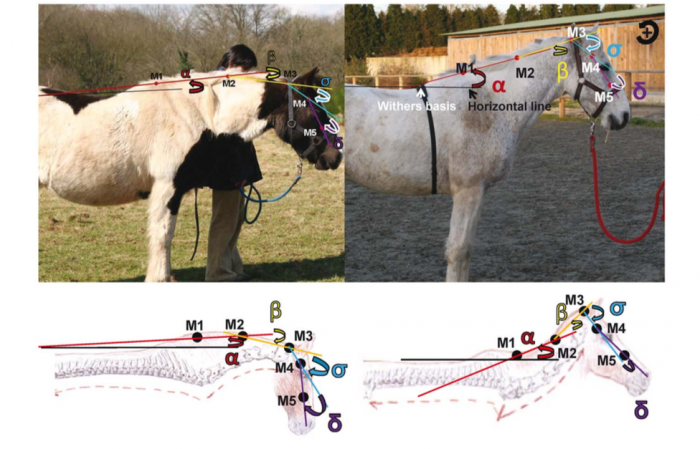
Posture as indicator of back pain in horses
Vertebral problems have a very high prevalence in horses. Several studies highlighted that surface electromyographic (sEMG) measures at rest enables the detection of various muscular dysfunctions or hyperactivity. The aim of this study was to validate posture as tool for welfare measurement. Therefore, this study is split into two parts:
- Validating the use of sEMG as an alternative to manual evaluation of vertebral spine disorders
- Relying neck postures to sEMG measures to reflect back problems
Two completely opposite populations, in terms of management and riding, were compared:
- 9 horses living in social groups outdoors for several years, used for occasional leisure riding.
- 9 riding school horses living in single stalls and exercised in riding lessons for 4–12 h per week.
The evaluation of the spine was performed by a chiropractor and assessed by a 2nd evaluator. Examination for vertebral stiffness was based on spinal mobilisation and manual palpation for muscle hypertonia.
The manual evaluation of the spine was highly correlated to sEMG evaluations. In fact, the same 7 horses found affected by the chiropractor were also under the sEMG threshold of muscle activity.
A concave neck was correlated with higher sEMG values (hence, muscular activity). Globally, the outdoor population showed rounder backs and necks. The muscular activity at the level of C3 and of the angle in neck shape points out neck “roundness” as a reliable indicator of back disorders, easy to evaluate in field conditions.
> From: Lesimple et al., PLoS ONE 7 (2017) 9(Epub ahead of print). All rights reserved to Lesimple et al.. Click here for the online summary.


